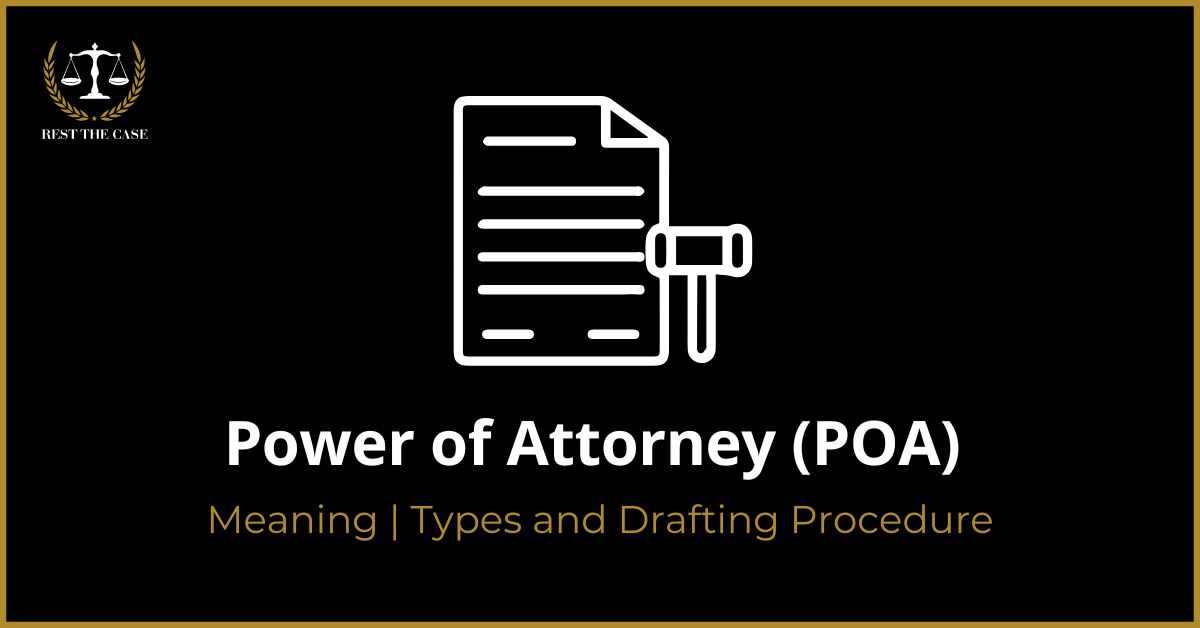The Ultimate Guide to Power of Attorney: Meaning, Types, and How to Set One Up
In the world of estate planning, one important document that you should consider is a Power of Attorney. This legal document grants someone else the authority to act on your behalf in various financial and legal matters.
A Power of Attorney is a legal document that allows you (the principal) to appoint someone else (the agent or attorney-in-fact) to make decisions and take actions on your behalf. This can be useful in situations where you may be unable to make decisions due to illness, disability, or absence.
The agent appointed through a Power of Attorney can have a wide range of powers, depending on the type of Power of Attorney you choose. These powers can include managing your finances, making healthcare decisions, and even selling or buying property on your behalf.
Types of Power of Attorney
There are several types of Power of Attorney, each serving a different purpose. The most common types include:
1. General Power of Attorney: This type grants the agent broad powers to act on your behalf in various financial and legal matters. It is often used when you need someone to handle your affairs temporarily or if you become incapacitated.
3. Durable Power of Attorney: Unlike a General Power of Attorney, a Durable Power of Attorney remains in effect even if you become incapacitated. This type is often used to ensure that someone can continue to manage your affairs if you are unable to do so.
4. Medical Power of Attorney: This type specifically grants the agent the authority to make healthcare decisions on your behalf. It is commonly used in situations where you may be unable to communicate or make informed decisions about your medical treatment.
Setting Up a Power of Attorney
Setting up a Power of Attorney involves several steps:
1. Choose the right type: Consider your specific needs and choose the type of Power of Attorney that best suits your situation.
2. Select your agent: Choose someone you trust to act as your agent. This can be a family member, friend, or even a professional such as an attorney or accountant.
3. Draft the document: Consult with an attorney to draft the Power of Attorney document. This document should clearly outline the powers granted to the agent and any limitations or conditions.
4. Execute the document: Sign the Power of Attorney document in the presence of a notary public or other witnesses, as required by your state’s laws.
5. Distribute copies: Provide copies of the executed Power of Attorney document to your agent, relevant institutions (such as banks or healthcare providers), and other individuals who may need to know about its existence.
By following these steps, you can ensure that your Power of Attorney is properly set up and that your affairs will be handled according to your wishes.
A power of attorney is a legal document that allows one person (the principal) to give another person (the agent or attorney-in-fact) the authority to act on their behalf in various legal and financial matters. This authority can be broad or limited, depending on the specific powers granted in the document.
There are several reasons why someone may choose to grant power of attorney to another person. It could be due to a temporary absence, such as during a vacation or hospital stay, or it could be a long-term arrangement for someone who is unable to handle their own affairs due to age, illness, or disability.
There are different types of power of attorney, each with its own specific purpose and scope of authority. The most common types include:
1. General Power of Attorney: This grants the agent broad authority to handle a wide range of legal and financial matters on behalf of the principal. It is often used for temporary situations or when the principal wants to give someone else the power to act on their behalf in all matters.
2. Limited Power of Attorney: This grants the agent specific and limited authority to act on behalf of the principal in a particular matter or for a specific period of time. It is often used for specific transactions, such as selling property or managing investments.
3. Durable Power of Attorney: This remains in effect even if the principal becomes incapacitated or unable to make decisions for themselves. It is often used for long-term arrangements, such as appointing someone to handle financial and healthcare decisions in the event of a disability.
Setting up a power of attorney involves several steps. First, you need to determine the type and scope of authority you want to grant. Next, you should choose a trusted individual to act as your agent. Then, you need to draft the power of attorney document, which should clearly outline the powers granted and any limitations or conditions. Finally, the document must be signed and notarized to make it legally binding.
Types of Power of Attorney
When setting up a power of attorney, it is important to understand the different types available. The type of power of attorney you choose will depend on your specific needs and circumstances. Here are the main types of power of attorney:
1. General Power of Attorney
2. Limited Power of Attorney
A limited power of attorney grants someone else the authority to act on your behalf for a specific purpose and a limited period of time. For example, you may grant someone a limited power of attorney to sell a property on your behalf while you are out of the country.
3. Durable Power of Attorney
A durable power of attorney remains in effect even if you become incapacitated or mentally incompetent. This type of power of attorney is commonly used in estate planning to ensure that someone can make decisions on your behalf if you are unable to do so.
4. Springing Power of Attorney
A springing power of attorney only goes into effect when a specific event or condition occurs, such as when you become incapacitated. This type of power of attorney can provide added protection and control, as it ensures that someone will only have authority over your affairs when necessary.
5. Medical Power of Attorney

6. Financial Power of Attorney

A financial power of attorney gives someone the authority to manage your financial affairs, such as paying bills, managing investments, and filing taxes, on your behalf. This type of power of attorney can be useful if you are unable to handle your financial matters due to illness, disability, or other circumstances.
It is important to consult with an attorney or legal professional to determine the best type of power of attorney for your specific situation. They can provide guidance and ensure that your power of attorney is properly executed and meets all legal requirements.
Setting Up a Power of Attorney
Setting up a power of attorney is an important step in estate planning. It allows you to appoint someone you trust to make decisions on your behalf if you become unable to do so yourself. Here are the steps you need to follow to set up a power of attorney:
| Step 1: Choose the Right Agent | Start by selecting someone you trust to act as your agent. This person should be responsible, reliable, and capable of making decisions in your best interest. It could be a family member, friend, or even a professional such as a lawyer or accountant. |
| Step 2: Determine the Type of Power of Attorney | There are different types of power of attorney, each granting different levels of authority to your agent. Decide whether you want a general power of attorney, which gives broad powers to your agent, or a limited power of attorney, which only grants specific powers for a certain period of time. |
| Step 3: Draft the Power of Attorney Document | Once you have chosen your agent and determined the type of power of attorney, you need to draft the document. It is recommended to seek the assistance of an attorney to ensure that the document is legally valid and covers all necessary provisions. |
| Step 4: Sign and Execute the Document | Both you and your chosen agent need to sign the power of attorney document in the presence of a notary public or witnesses, depending on the requirements of your state. This step is crucial to make the power of attorney legally binding. |
| Step 5: Distribute Copies and Inform Relevant Parties | After the document is signed and executed, make sure to distribute copies to your agent, your attorney, and any other relevant parties, such as financial institutions or healthcare providers. It is also important to inform these parties about the existence of the power of attorney. |
Remember, setting up a power of attorney is a proactive measure that can provide peace of mind and ensure that your affairs are handled according to your wishes. It is always recommended to consult with an attorney who specializes in estate planning to guide you through the process and ensure that your power of attorney is properly set up.

Emily Bibb simplifies finance through bestselling books and articles, bridging complex concepts for everyday understanding. Engaging audiences via social media, she shares insights for financial success. Active in seminars and philanthropy, Bibb aims to create a more financially informed society, driven by her passion for empowering others.
